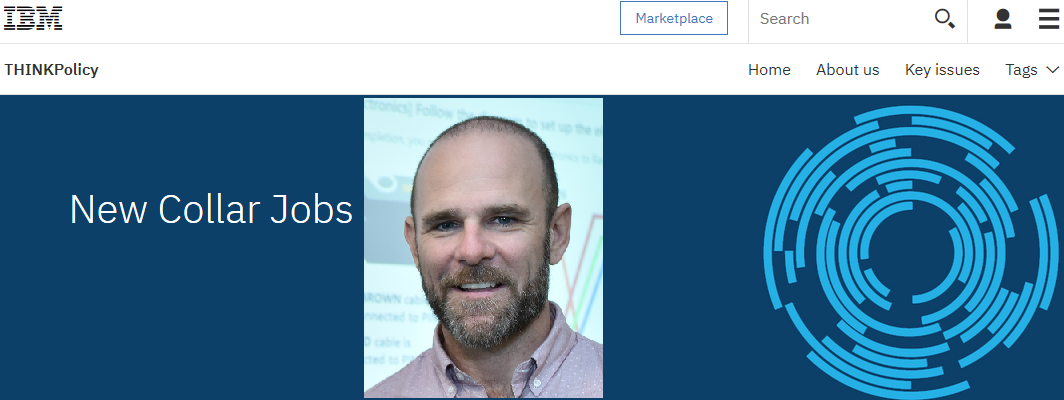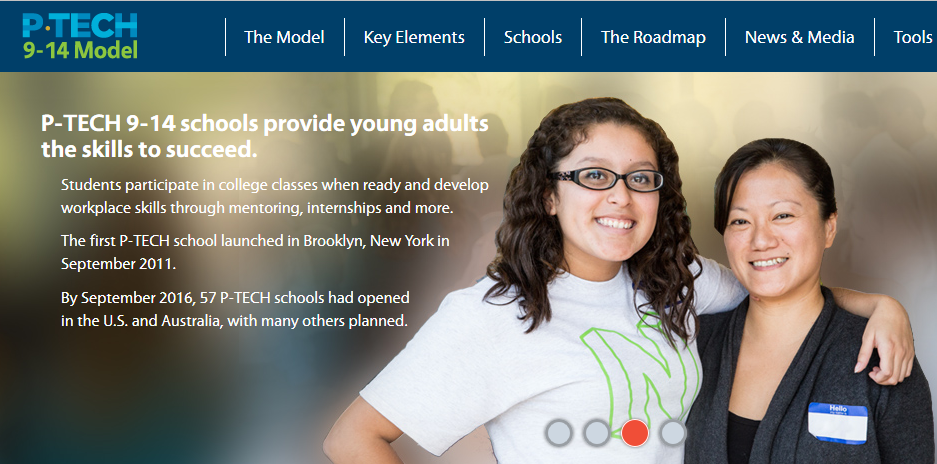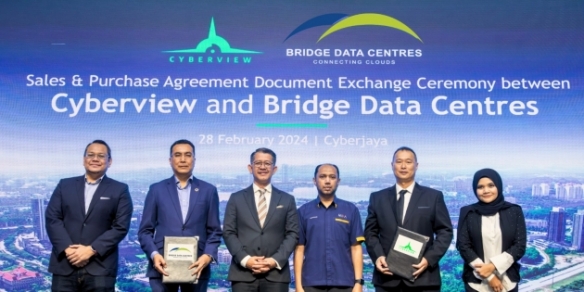Bringing the future a step closer to home
By Sharmila Ganapathy-Wallace July 26, 2017
- ‘New collar’ is not about challenging the need for academic degrees, says IBM.
- Leading the P-TECH journey should start with governments

SINCE last year, IBM chairman, president and chief executive officer Ginni Rometty has been championing the concept of ‘new collar’ jobs and the urgent need to fill these jobs so that world economies can progress further.
Rometty had written a letter to USA Today in December last year, in which she noted that ‘new collar’ jobs might not require a traditional college degree, saying also that as many as a third of employees at IBM don't have a four-year degree.
Digital News Asia caught up with IBM's corporate citizenship executive for the Asia Pacific region David Raper (pic, above) for his insights into the tech giant’s ‘new collar’ concept and what it means for the region.
Raper is upfront at the outset that ‘new collar’ is not about challenging the need for academic degrees. “I think what we’re promoting is a focus on skills and capabilities rather than challenging academic degrees, I think that’s the way we would think about it.”
He explains that the idea of ‘new collar’ arose because of what IBM has seen while recruiting and via their observations of the economy, is that there is a category of jobs linked to the fourth industrial revolution such as artificial intelligence, cyber security and user experience design to name a few.
Companies like IBM as well as other employers, he says, can’t fill those type of jobs due to a skills gap. “Education systems just can’t keep up with the pace of the change in the economy and that’s why we’re really having this big focus on skills because it’s about what can you actually do that might come through an academic qualification at school.
“It also might come from your experiences in other jobs or participating in hackathons, building your own apps, generating those skills in enumerative ways and so that’s really what we’re trying to highlight, there are opportunities there that we as individuals and new collars are trying to shine a light on that concept.”
He notes that in the Unites States and elsewhere, what challenges education is that people are getting qualifications but they’re not necessarily getting the skills and what IBM focuses on is ensuring people have the skills.
The deeper issue here in the Asia Pacific region however, is that there is a disparity in terms of development between a country like Singapore and Vietnam, for instance. How can both countries leverage on the ‘new collar’ concept when they are at different stages of development?
Raper agrees that Singapore has a very vast and high-tech economy and has made great strides with cybersecurity and blockchain technologies, hence there will be ‘new collar’ jobs growing out of the Singaporean economy.
“Let’s shift to Vietnam, which is at a different stage of economic development. Being a manufacturer for applications is a real opportunity for a country like Vietnam. At each stage of development, different sorts of technologies are going to be needed, different problem solving but again for it to be successful in the way it is going to grow, it’s going to need all sorts of skills too.
He adds: “I don’t think there are many countries where you would say technology and technology related skills are not very close to the top of their national agenda in the terms of the growth of the economy and the skills that they need.”
Solving the skills problem

IBM has been striving to solve the skills problem since 2011, when it introduced a career and technical education model that emphasises science, technology, engineering and mathematics (STEM) subjects. As at end 2016, there are 60 P-TECH model schools across the United States. The schools are free of charge.
Students enrol at P-TECH schools from the 9th graduate and graduate within six years with an associated degree in applied science, engineering, computers and related disciplines, along with the skills and knowledge they need to continue their studies or step into a job.
P-TECH schools do not use traditional textbooks. Instead, students learn everything, from basic theories to real-world hands-on experience. The schools also provide paid summer internships and pair students with employees of partner companies who can provide mentoring and career advice.
“Currently it’s growing very fast in the United States where there will be over 80 schools by the end of the year. We’ve started in Australia, where by this time next year we [the governments and IBM] will have 14 schools and we’re in the planning processes for Morocco as well,” Raper shares.
With Australia currently the only country in the Asia Pacific region with P-Tech schools, IBM is having discussions with other governments about whether P-TECH is the right solution for their country.
“The thing about P-TECH though it’s that the government needs to decide if it wants to lead that journey because it’s not so much about the school, it’s about systematic change of the education system and no company can or probably should drive that,” he points out.
He adds that the governments need to be convinced this is what they want to do and that IBM is keen to be part of that aspiration, bringing the things the company has learned from setting this up in other places and sharing resources on how to do so.
Fostering teacher education

While P-TECH has yet really take off in the Asia Pacific region, IBM has successfully introduced its Teachers TryScience programme in a number of countries, including Malaysia. The other countries that have implemented this programme are Singapore, South Korea, Thailand, India and Vietnam, Raper shares.
Teachers TryScience is an online resource of 150 lesson plans for teachers to create and customise hands-on learning materials. The design-based learning is aimed at changing the traditional classroom culture of rote learning and textbook based instruction to the use of practical work to understand scientific theories and concepts.
In March 2016, IBM piloted MY Teachers Tryscience with 300 teachers from Universiti Pendidikan Sultan Idris to raise the proficiency of STEM among lower secondary school students. An estimated 15,000 students from 300 schools are expected to benefit from the programme.
Earlier this year, the programme was expanded to include equipping special education teachers with lesson plans for 30,000 special needs students in Malaysian schools.
The other programme that IBM has for teachers’ education is Teacher Advisor with Watson, which is a free cognitive coach for teachers to provide high-quality lesson plans and instructional materials. Powered by IBM’s cognitive computing tool Watson, Teacher Advisor guides teachers as they plan and deliver lessons to better meet the needs of each and every student. This programme will be launched globally in September, says Raper.
While it remains to be seen when governments in developing Asia will see the need for the P-TECH model, it is heartening to know that IBM has started the ball rolling towards closing the skills gap in STEM via its Teachers TryScience and Teacher Advisor programmes.
Related storie:
IBM to open blockchain innovation centre in Singapore
Singapore shines in IBM Watson APAC challenge
AI: Man vs machine, or man AND machine?
For more technology news and the latest updates, follow us on Facebook,Twitter or LinkedIn.


